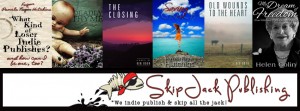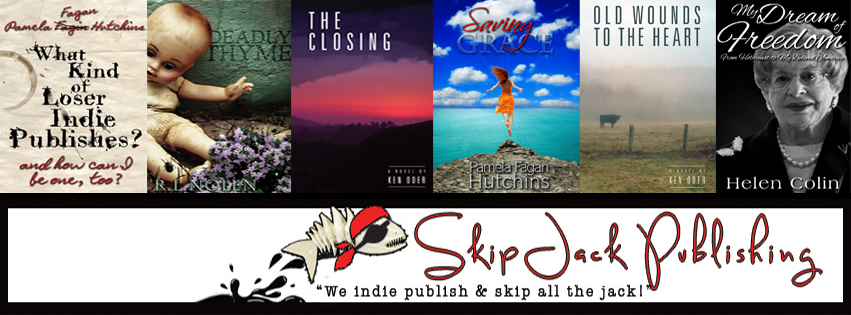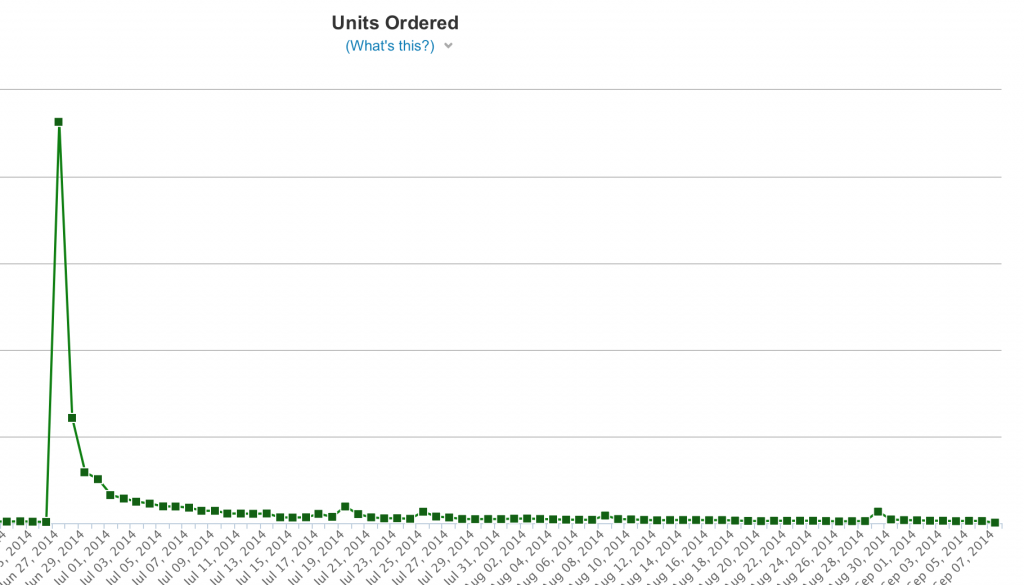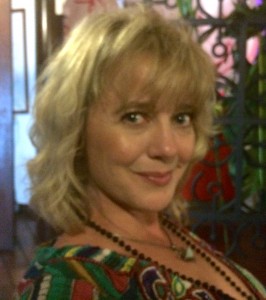What can you do with books?? Other than read them; you can stack them, look at them, decorate with them and even insulate a wall with them. They are the BEST hand me down, re-purpose, recycle, GREEN gift you can give this Christmas season. Give a book this year, support an Author and a bookstore. Books are easy to wrap for those of us who are present-wrapping-challenged. If you buy a book online, leave a review on the Author’s page, this HELPS more than you will ever know.
The season of goodwill and good tidings is a perfect time to take a young person who may never have stepped foot in a Library..to a Library. Get dressed up, unleash that adventurous thrill seeking spirit, borrow a kid if you have too..and go to a Library this Christmas. The SkipJack team is betting our elf stockings that it will change your life, if only for a day.

Inspiration for this blog came from an old post by Pamela Fagan Hutchins. Great story below….
First, a story that horrifies my mother: When I was a child living about two miles outside the town of Buffalo, Wyoming, the highlight of each week during the summer after 2nd grade was a visit to the town’s small library to pick up my next seven Trixie Belden and Nancy Drew books. That old, dark library was my favorite place on earth. It gave me chills to stand between the tall shelves, breathe in the faintly mildewed loamy smell of old pages, and it opened up a world of adventures that eventually became my life as a mystery writer.
One day I’d been pestering my mother to take me into town, until finally I said, “Can I walk there by myself?” Whether it was with her permission (my version) or behind her back (her version), I walked two miles into town along the highway, juggling seven hardback books in my arms sans bag, to trade in for seven beautiful new ones, then walked home again. I remember it was hot and the books were heavy and cumbersome. My feet hurt. The sun burned my eyes. And it was the best day of my life, up until that point. It’s no surprise my third grade teacher told my parents their girl would become a mystery novelist someday.
Libraries rock. Libraries matter. Libraries need us, our books and our ebooks, and our thirst to read them.
So on to today’s indie publishing topic: libraries. I believe in events to gain visibility and sales for books. Despite my initial resistance, I also gave into my husband’s belief in giveaways to accomplish the same goal; I’m a believer now. As an indie author, I have spent the last few years experimenting with what types of events and giveaways create the GREATEST visibility and sales. I haven’t exhausted all my options yet, but I’m ready to report on one in particular: libraries.
Smashwords, love ’em or hate ’em, had this to say about libraries:
1. Libraries perform an important social function by making books accessible to all readers in their community. By supporting libraries, you’re supporting a culture of books. 2. Libraries are powerful discovery engines, and powerful platform builders. As an author, obscurity is the biggest challenge you face. Libraries help readers discover you. 3. Library patrons purchase a lot of books. Readers who discover your books at libraries are more likely to purchase your other titles. If you’re not available at libraries, it means these patrons will discover someone else.
I agree.
Getting your books in libraries: Do libraries buy my books? Yes, usually when I know someone on the library staff, sometimes when readers request them. Either way requires a lot of effort to get to one purchase. And libraries–especially small community libraries–have miniscule budgets. Most of the books on their shelves are donated. DONATED. Sure, it may be different at a big city library, but out in the vast “wasteland” of the red states (where I live!) are small towns by the score in communities populated by good people who aren’t even trying to keep up with the Jones. And even in a big city library, most of the budget goes to books on bestseller and awards listed dominated by traditionally published books (don’t get me started on that topic, since the barriers to entry onto the lists and into the contests are jealously guarded by those that profit from their impact).
Is it easier to get ebooks into libraries than print? Well, it should be, if for no other reason that patrons are clamoring for them and big pub thinks library ebooks are a threat to more lucrative print book sales.
But even getting your ebook into the libraries as a gift/free, something that would cost you nothing, is a challenge. Many libraries source their ebooks through Overdrive, who your “publisher” would need to work with directly for you to have a chance of participating in those sales. You can sign up with an aggregator, like BookBaby or Smashwords, to make you eligible for Baker & Taylor’s Axis360, 3M Cloud Library, Library Direct, or other library aggregators who distributes ebooks to some libraries.
But don ‘t think that “if you build it, they will come,” necessarily. I’ve had my books FREE to libraries on Smashwords for nearly two years, and to my knowledge none of my books have “sold” to a library. Heck, libraries and Oyster/Scribd (“all you can read” subscription services) are the only reason I’m even on Smashwords, but yet there are NO sales? Fishy, if you ask me. I know that eight of my books sold in November on Oyster because I BOUGHT THEM, but still no royalties in sight. Ahem. And my books do sell quite well-on Amazon, Barnes and Noble, Apple, etc.–just not, apparently, on or through Smashwords. So, conceivably, a patron could ask for the ebook to my Saving Grace and a librarian could order it, because I’m on Smashwords. It’s just never happened. Anyway, I digress. Click to enlarge these photos of Smashwords’ take on libraries and pricing, and a screen shot of my participation in their various library aggregators. It’s interesting stuff.
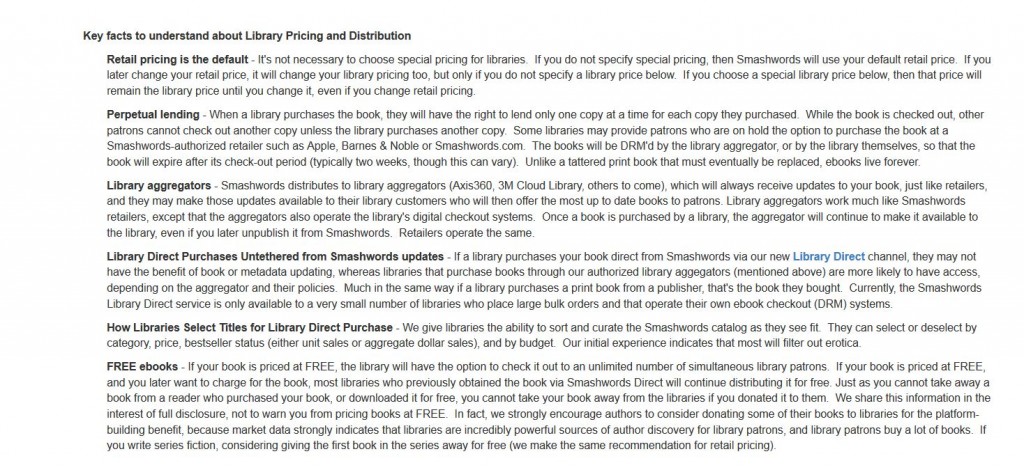

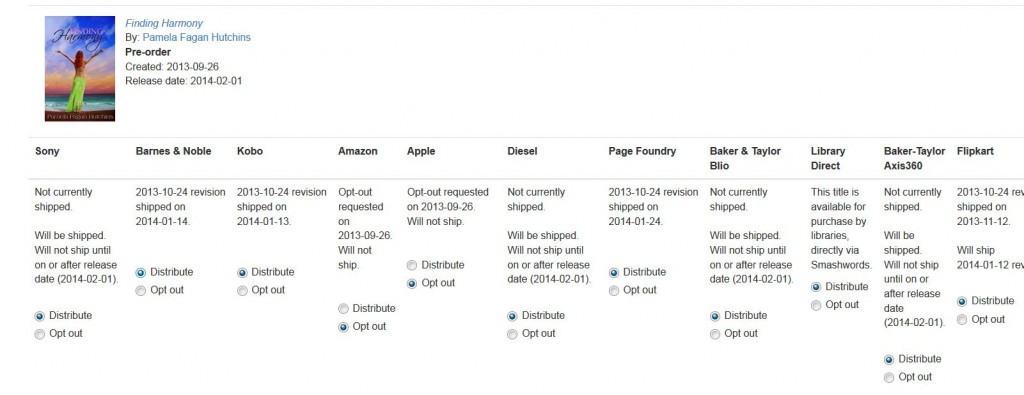

I haven’t had any success just marching into a library and announcing I’d like to donate my ebook, either. They just don’t do ebooks onesie-twosie. This puts us right back to the aggregators (Overdrive, Axis360, 3M Cloud, Library Direct).
All of this suggests that it may be pretty dang hard to get your indie published book into libraries without a lot of effort. I can’t completely dispel that notion for you, unfortunately, but I can give you a few tips on how to make it as easy and affordable as possible.
Method 1: Aggregate FREE for ebooks.
Yeah, yeah, I know I just said it’s not working for me. I should have added YET. It’s not working for me yet. I’m not giving up on my “free to libraries” strategy on Smashwords, as they continue to add library aggregators like Axis360, 3M Cloud, and Library Direct. Maybe I just need to double-down with BookBaby now that they’ve waived their registration fee and are competing head to head with Smash. (If you hadn’t heard that bit of news, you’re welcome for the tidbit. It was announced last week.)
Honestly, I know what’s hurting me on Smash. I don’t aggregate to Amazon, B&N, or Apple, the three biggest online ebook retailers. Thus my Smash numbers suck. When they sell collections to library curators through the aggregators, it is often based on Smash-compiled sales. They don’t care that my book is a bestseller on Amazon if they’re not getting their cut. Yeah, well, I’m still not giving up 15% of my three biggest sources of indie publishing income. Not yet. I just don’t see how giving up that 15% will help me. <= If someone wants to convince me otherwise, please do. I never turn down the chance to get smarter.
Method 2: Ask your print readers to donate.
If you’re an author, indie or otherwise, you should have an email list that you administer through Mailchimp or Constant Contact. You should have a blog with subscribers. You should be using social media like Facebook, Goodreads, and Twitter for connections and communication. And you should consistently use all of them to encourage your readers to gift their books, once read, to libraries (or humans), unless they are very, very special to them as keepsakes. It’s the right thing for the environment and their favorite author, too.
Note: receipt of a donated book doesn’t guarantee it will end up on library shelves. Many libraries use donated books as inventory for Friends of the Library sales to generate money to buy other books. While this is not the optimal result you may have hoped for, a sale of your book still results in a book ending up with a human for reading. That’s better than a poke in the eye with a sharpened pencil.
Method 3: Donate print to libraries.
Here’s where the rubber meets the road. Donate your own copies of your books (and other authors’ books) to libraries. You can do this onesie-twosie, like when you’re in town for a book event and swing by the local library. Or you can do it on a grand scale, like my husband just did with my books.
Eric acquired a list of Texas and U.S. public libraries and ordered 1000 copies of Saving Grace and What Kind of Loser Indie Publishes, and How Can I Be One, Too? All told, our Ingram order was for 4500 books (for various purposes), so we got them for less than $3 apiece, including shipping. Then he spent evenings and weekends for a few weeks stuffing the two books and a letter in each package and mailing them to a hand-picked 1000-library list based on the communities where we thought I had the greatest visibility opportunities. He based the selection decision on where I had held book events or had contacts, as well as where I could conceivably support the libraries with speaking/teaching or sales events. He offered me as a FREE speaker in the letters, which went out with the packages in December of 2013.
Here’s the letter he included:
His goal was that the librarians read the books and recommend them to their patron. Librarian superfans and indie bookstore owner superfans are the two best possible kind to have, although superfans of any variety don’t suck. He hoped to stimulate sales of my other books with these two, and possibly orders by the libraries of the others as well.
KEY: this mail out wasn’t a business expense, it was a charitable deduction, which we can fully use on our taxes. That matters for us. We always look at a business expense as “1/3 off.” Well, a tax deduction is even better. How much? Hell, I don’t know. That’s what I pay my CPA the big bucks to figure out.
How did it work? Well, tax benefit aside, the results have been great so far. As of January 25th, the letters/emails/website comments from librarians are highly complementary of the books (Thank God). Some librarians immediately hand-placed the books with patrons they felt would enjoy them. Others contacted me to speak. Others put me in book club rotations (which resulted in immediate sales). Here’s my spring speaking schedule:
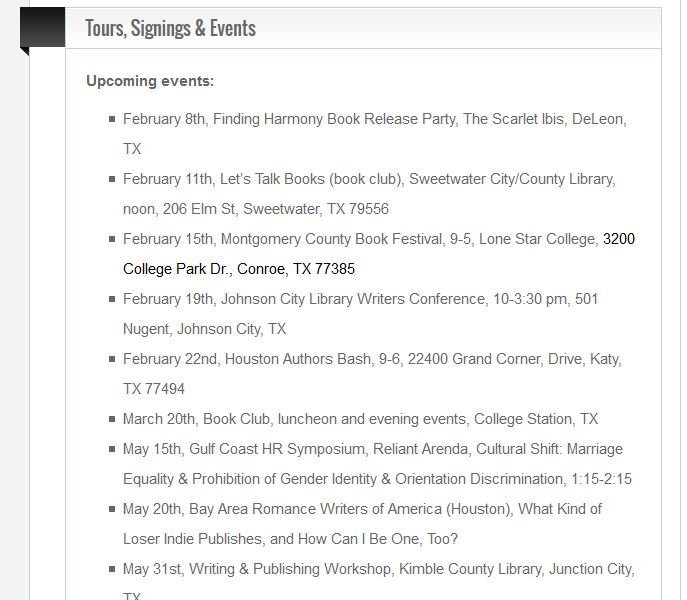
So let’s talk events for a moment:
Note that while I don’t get paid for these appearances, I sell my books and CONNECT WITH READERS (which sometimes helps in cultivating the superfans, again). Also note that I have not sought (nor will I seek) any bookstore appearances in 2014, as I experimented with stores in 2013, and I want to focus on libraries in 2014. As I mentioned earlier in this post, I am trying to figure out which events work best for me. In 2013, I wanted to see if great Nielsen BookScan numbers could get me mass distributed in chains (answer: nope — it’s a David and Goliath world, and I’m David, fighting alone and hampered by POD pricing). The events cost me far more than I ever made at them. Now I’m experimenting with direct sales at private event and public events, like at libraries.
Keep in mind, you don’t have to donate on the grand scale that we did. We’re just crazy that way. Do it simple and close to home and see what you can generate with your area libraries. Be sure to keep track of it for your taxes, too.
So, there you have it. Libraries. I love them. I want in them. I’m trying every which-a-way I can think of to get my books there.
How about you? Do you agree? Are your books in libraries? How are you getting them there?
Until next time,
Pamela
 Pamela Fagan Hutchins writes overly long e-mails, hilarious nonfiction, and series mysteries, like Katie & Annalise which includes the bestselling Saving Grace, and Emily which she kicks off with the 2015 WINNER of the USA Best Book Award for Cross Genre Fiction, Heaven to Betsy. She resides deep in the heart of Nowheresville, Texas and in the frozen north of Snowheresville, Wyoming. Pamela has a passion for great writing and smart authorpreneurship as well as long hikes with her hunky husband and pack of rescue dogs, traveling in the Bookmobile, and experimenting with her Keurig. She also leaps medium-tall buildings in a single bound (if she gets a good running start).
Pamela Fagan Hutchins writes overly long e-mails, hilarious nonfiction, and series mysteries, like Katie & Annalise which includes the bestselling Saving Grace, and Emily which she kicks off with the 2015 WINNER of the USA Best Book Award for Cross Genre Fiction, Heaven to Betsy. She resides deep in the heart of Nowheresville, Texas and in the frozen north of Snowheresville, Wyoming. Pamela has a passion for great writing and smart authorpreneurship as well as long hikes with her hunky husband and pack of rescue dogs, traveling in the Bookmobile, and experimenting with her Keurig. She also leaps medium-tall buildings in a single bound (if she gets a good running start).
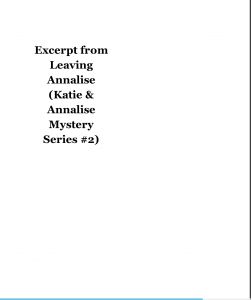
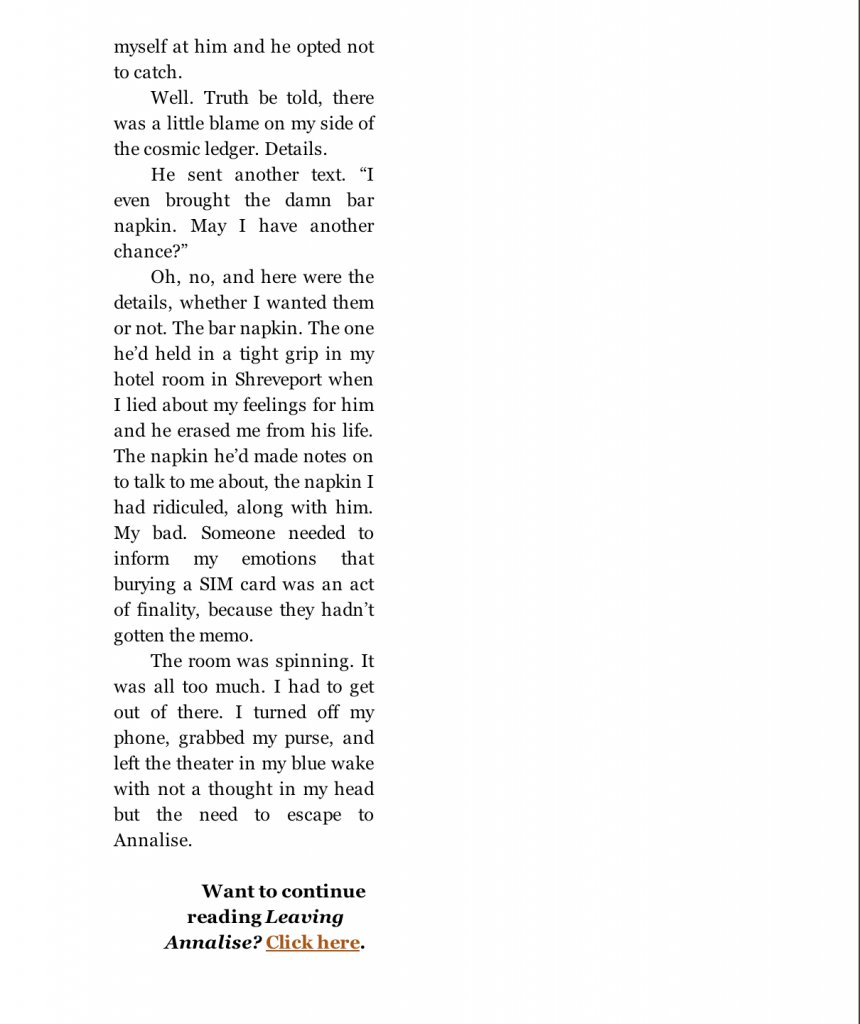

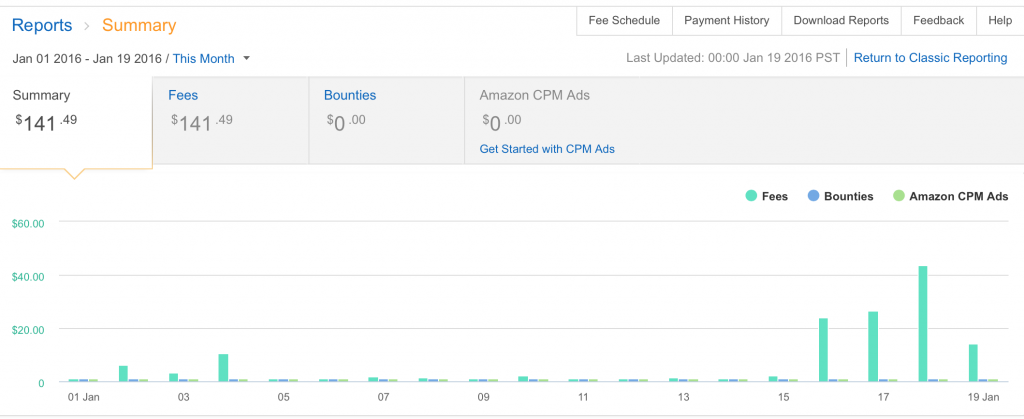
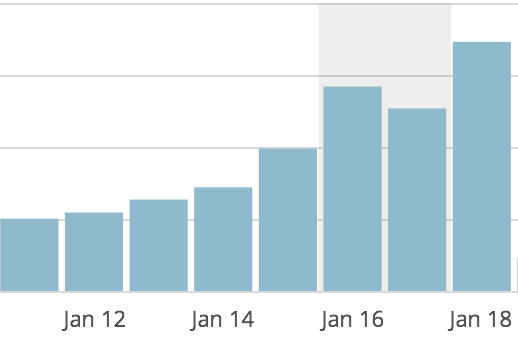
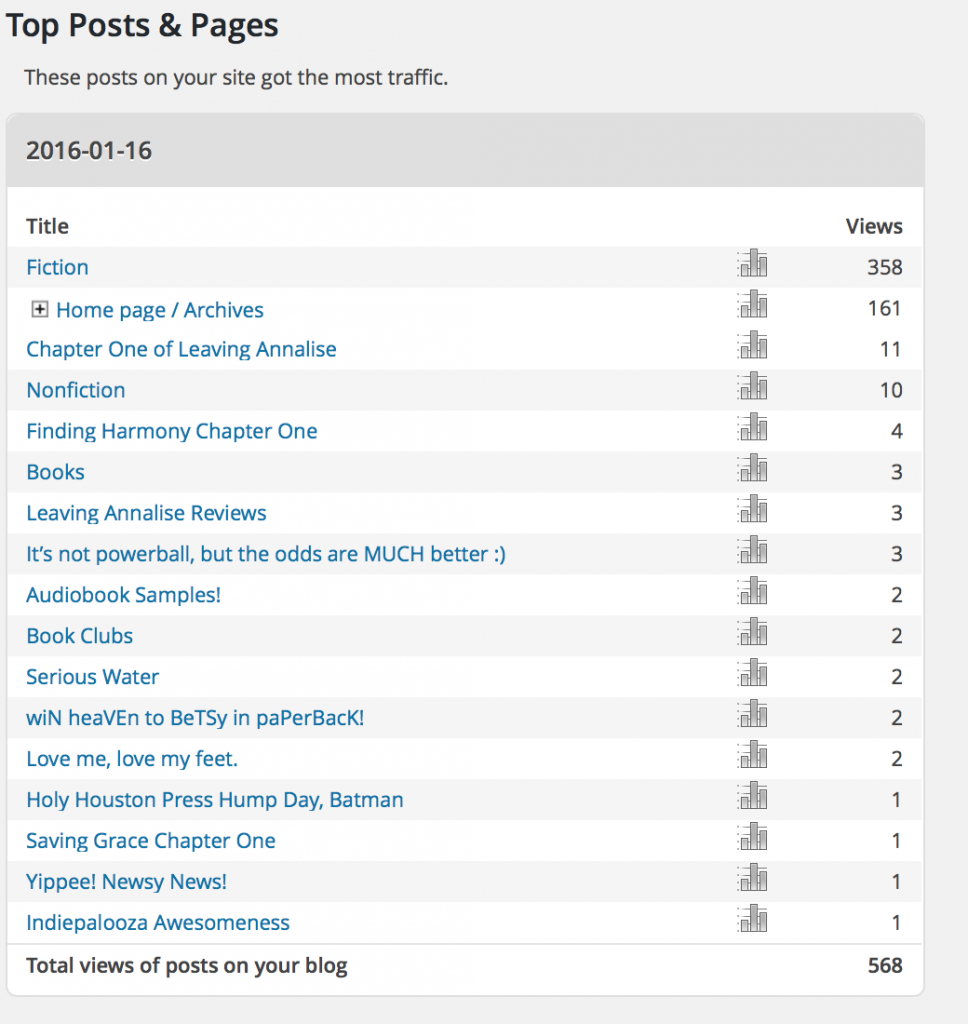
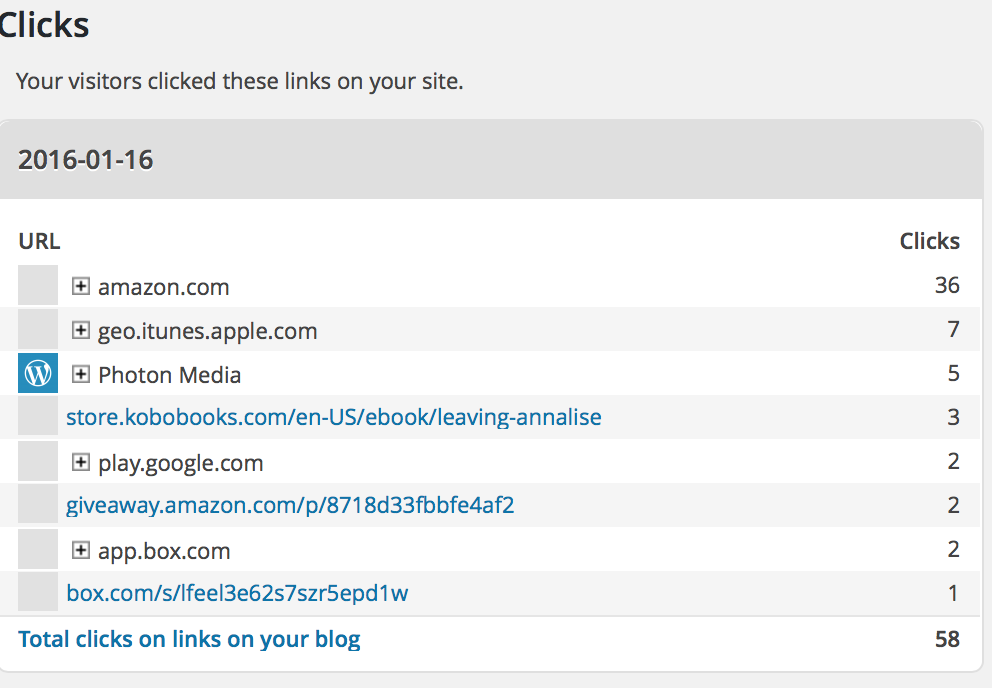
 Pamela Fagan Hutchins writes overly long e-mails, hilarious nonfiction, and series mysteries, like Katie & Annalise which includes the bestselling Saving Grace, and Emily which she kicks off with the 2015 WINNER of the USA Best Book Award for Cross Genre Fiction, Heaven to Betsy. She resides deep in the heart of Nowheresville, Texas and in the frozen north of Snowheresville, Wyoming. Pamela has a passion for great writing and smart authorpreneurship as well as long hikes with her hunky husband and pack of rescue dogs, traveling in the Bookmobile, and experimenting with her Keurig. She also leaps medium-tall buildings in a single bound (if she gets a good running start).
Pamela Fagan Hutchins writes overly long e-mails, hilarious nonfiction, and series mysteries, like Katie & Annalise which includes the bestselling Saving Grace, and Emily which she kicks off with the 2015 WINNER of the USA Best Book Award for Cross Genre Fiction, Heaven to Betsy. She resides deep in the heart of Nowheresville, Texas and in the frozen north of Snowheresville, Wyoming. Pamela has a passion for great writing and smart authorpreneurship as well as long hikes with her hunky husband and pack of rescue dogs, traveling in the Bookmobile, and experimenting with her Keurig. She also leaps medium-tall buildings in a single bound (if she gets a good running start).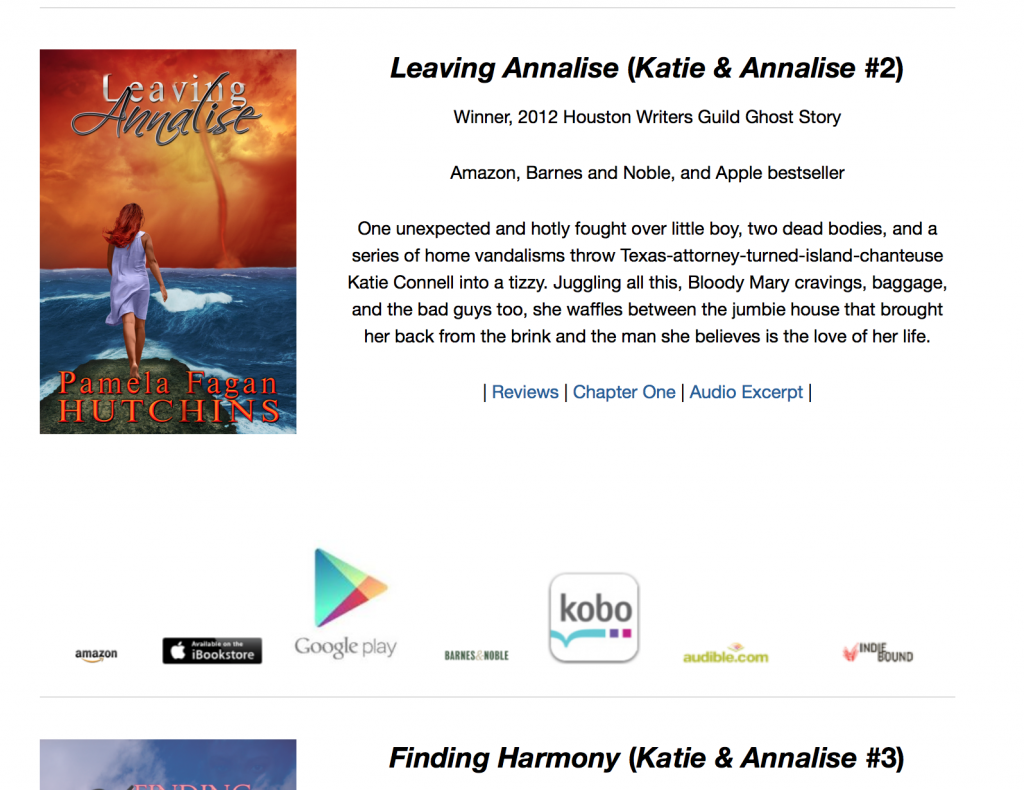
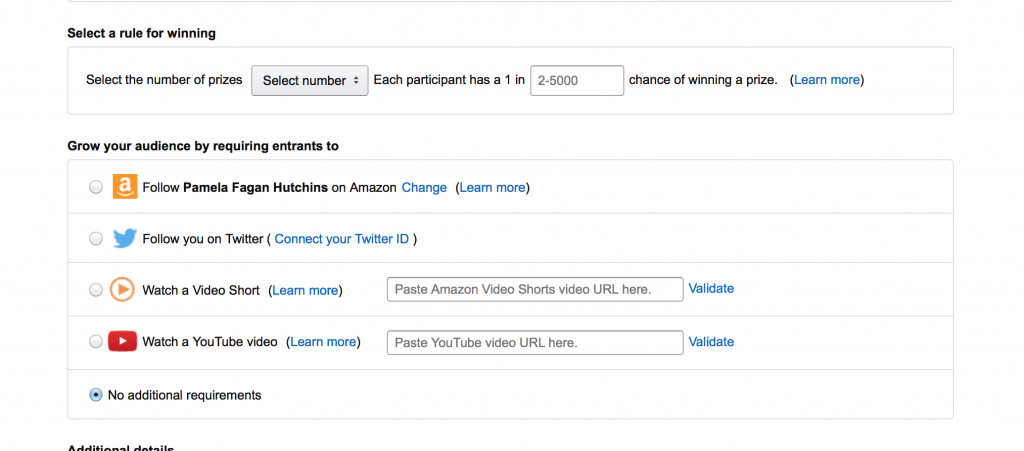
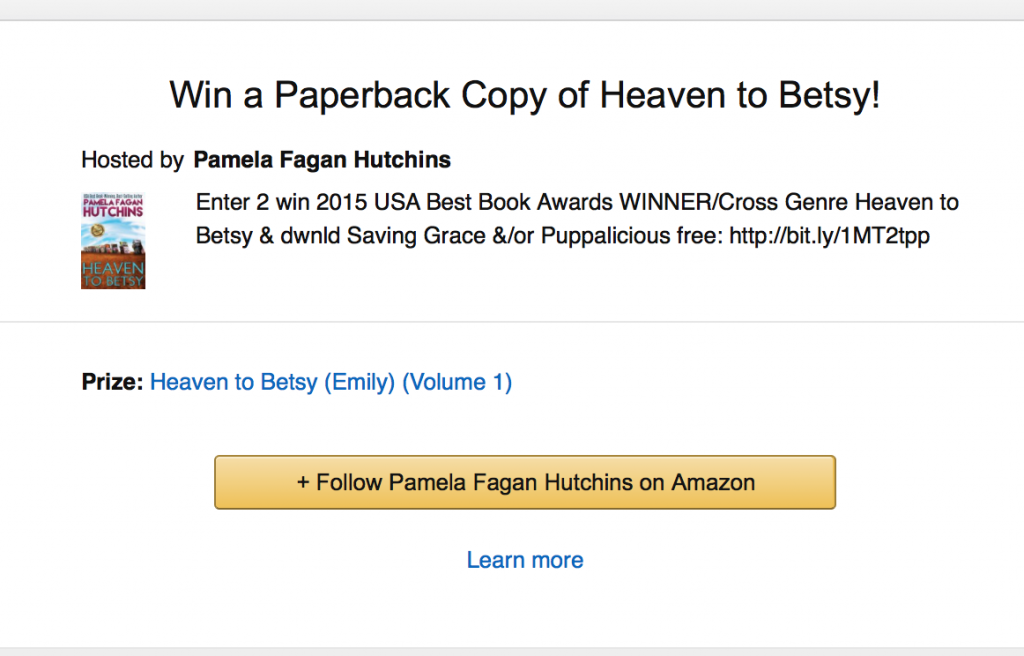
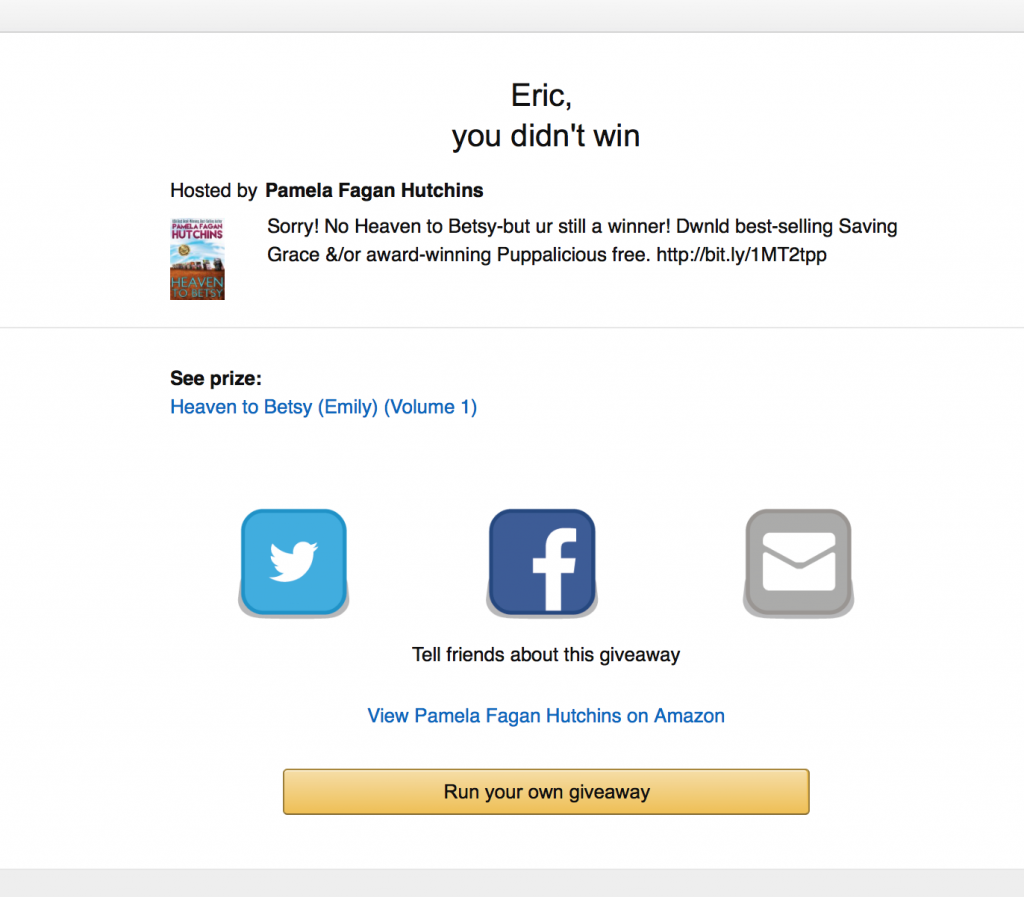
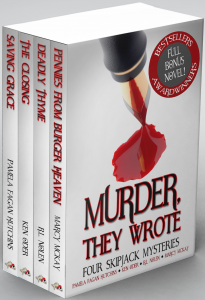
 ut living your best life. LOVE your life, every line of it. Write your own Story this holiday season. Practice makes perfect, get a jump on 2016. Cheers and Eggnog.
ut living your best life. LOVE your life, every line of it. Write your own Story this holiday season. Practice makes perfect, get a jump on 2016. Cheers and Eggnog.